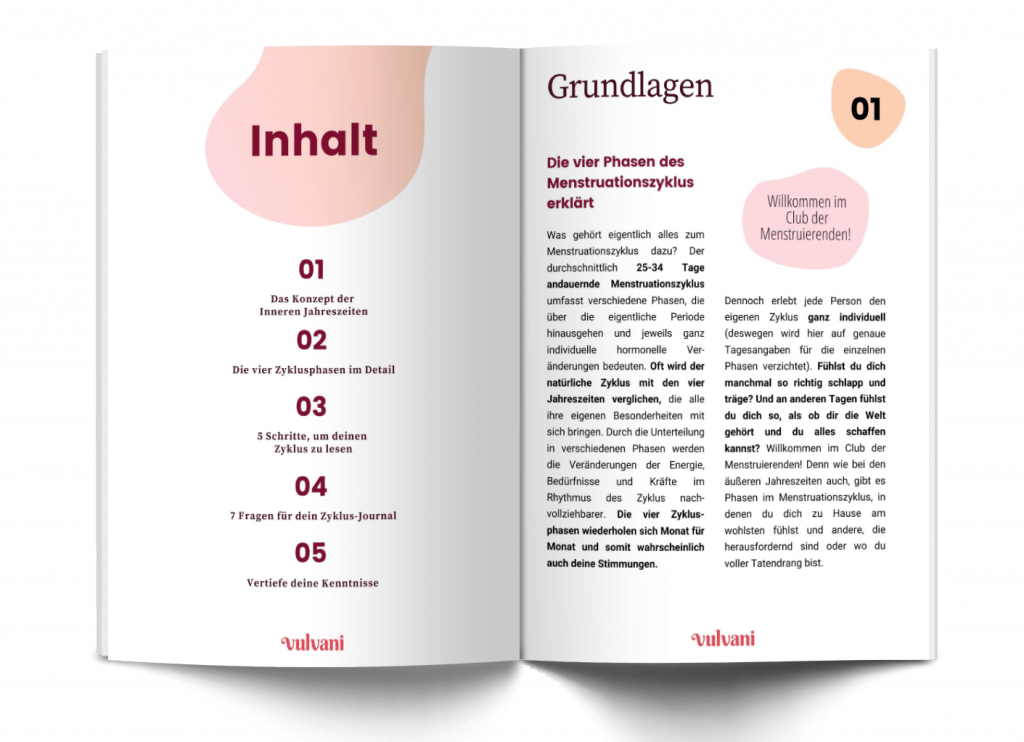
Discovering your menstruation as a spiritual practice
Yasmine understands her menstruation as a spiritual practice and shares in this interview how she is connecting more with her own body through cycle awareness.
Every menstruating person experiences their period quite individually. But what are this period pain, why do we have it and what can we do about it? In this article I will explain to you which pain is normal and when you should seek medical help.
The term period problems is used to describe various types of discomfort or pain that can occur during menstruation. While some people have no symptoms at all, others suffer from severe menstrual pain every month. That is why we are going to look at what types of period problems exist, what is normal and why we actually have them. And this can have a very negative effect on the person’s attitude to life and well-being. By the way, the medical term for heavy painful menstrual bleeding is “dysmenorrhea”. Because there are different types of period pain:
Menstrual cramps are divided into primary and secondary period pain. Primary period pain is milder and can be relieved naturally with (simple) home remedies and a healthy diet. Although the pain is unpleasant, it is bearable and usually harmless. The causes of primary period pain are not disease related and are very individual. Reasons for menstrual pain can be, for example, the early onset of the first period, low body weight, a long menstrual cycle or even genetic predisposition. Ask the menstruating people in your family how they experience or have experienced their period. Maybe your experiences with menstrual problems are similar? The good news is: Statistically speaking, the pain decreases with age.
Secondary period pain, on the other hand, is caused by an underlying gynecological or organic disease. These can be, for example, endometriosis, Uterine fibroids (polyps), cancer or inflammation of the reproductive organs. Endometriosis is the most common cause of secondary period pain. In some cases, the symptoms are so severe that those affected cannot go about their normal daily lives for several days a month. To relieve secondary period pain, the focus is on the treatment of the underlying disease. It is best to speak directly to your gynecologist if you suffer from severe menstrual pain.
You may ask yourself: Where does menstrual pain come from? During your period, the uterus contracts cramp-like, causing contractions of the uterine muscles. The muscle movements are caused by hormones, for example prostaglandin. Depending on the strength of the contractions, these can cause pain. But why does the uterus contract at all? Every month during the menstrual cycle, new uterus lining forms to prepare for the fertilized egg. If fertilization does not occur, the lining of the uterus is not needed and is rejected. This consumes a great deal of energy from the body. The muscles of the uterus contract in waves, which can lead to cramping pain. The rhythmic muscle movements also cause the blood circulation within the uterus to be interrupted by the cramps. This can cause a lack of oxygen, which is the reason for additional period pain (ischemic pain).
Menstrual problems are very unique and can occur in up to 150 different forms. The complaints can range from an unpleasant feeling in the back to diarrhea and severe abdominal cramps. Dizziness, nausea, a feeling of tension in the breasts or tiredness are also typical. Headaches and abdominal cramps are among the most common complaints during menstruation. Besides physical pain, mood swings can also occur.
The symptoms usually appear a few hours before the start of your period and last for a day or two. Every menstruating person can be affected by menstrual cramps. Up to a certain point, period pain is normal, especially at the beginning of your period. But it is difficult to say exactly to what (pain) degree period pain is normal. As long as the monthly menstrual pain is bearable and simple home remedies help, everything is probably okay. However, if the symptoms during your period (severely) restrict your everyday life and your own performance, you should make an appointment with your trusted gynaecologist. This is because diseases, such as endometriosis, can be the cause of the severe pain. These are then the painful and/or difficult menstrual periods with great discomfort, which in medicine are called dysmenorrhea.
You might be wondering whether your menstrual symptoms are (still) normal? It often helps to talk with other menstruating people about their own period problems. This will give you a better sense of how others experience their periods. Here are some questions that can help you classify your pain:
Sometimes it helps to ask yourself these questions every month anew and to create a small period journal over time. This way you will get a good picture of your symptoms, recognize patterns and develop a feeling for which symptoms and pain are ‘normal’ for you. Take your notes with you to your next appointment with your gynecologist and get medical advice on it.
In case of severe menstrual problems that restrict your everyday life, a medical examination is important! Suddenly occurring menstrual pain or changes in the duration or intensity of your periods should always be professionally examined. It is better to have another check-up to make sure that everything is fine and to get the necessary medical support to treat your menstrual problems, if needed.
First of all, you don’t have to climb mountains or lift moves on the days of your period (as is often portrayed in advertisements). Take time for yourself and retreat. Among my personal tips for period pain are warming aids like hot water bottles, heating pads and, of course, tea. If you feel the urge to exercise, try some light yoga exercises. Often little things like listening to music, podcasts or audio books also help. A balanced diet can also help against period pain. But the most important thing is: find the right self-care that suits you personally!
How are you feeling during your period? Are you more of carefree period person or do you suffer from all kinds of menstrual cramps? What are your most common complaints? And has it always been like this or has your period changed over the years? Tell us about your symptoms and how you feel during your period.
Illustration by Magdalena Otterstedt / Kopfüber Design for Vulvani



Yasmine understands her menstruation as a spiritual practice and shares in this interview how she is connecting more with her own body through cycle awareness.

What options are there for male birth control? Ailsa delivers an overview of what is available now, and what may come in the future.

Sustainable underwear? The founders of TUKEA talk about fair labour conditions, body diversity and body literacy.
…and empower countless women to make empowered choices about their bodies!

